Call me Ishmael.
Well, call me Ahab, actually, because like the obsessed captain from the novel Moby Dick, I was on the hunt for the white whale – only this time the white whale wasn’t some menacing giant out in the vast expanse of the open seas, but a smiling beluga in the St. Lawrence Seaway. Henk and I were whale-watching in Québec along the Maritime region’s Whale Route and we were on a mission!
The Whale Route in Maritime Québec
If you haven’t considered Québec as a top destination for whale-watching, you may be surprised to learn that the St. Lawrence Seaway is one of the top regions for whale watching in the world. This is because of its unique underwater topography: a deep trench right off the north shore starting near the Saguenay Fjord provides optimal feeding conditions for whales like the fin, minke, humpback and more. The area is so unique in fact, that it was designated as the Saguenay-St.Lawrence Marine Park in 1988, whose mission is to protect the marine species in the region. And one of the most at-risk species here is the beluga whale.
Why Are There Belugas in the St. Lawrence?
Belugas are considered arctic whales, because they are typically found in the icy waters farther to the north in places like Churchill, Manitoba, near Hudson’s Bay. They are actually closely related to another arctic dweller, the narwhal, both of which are physically adapted for life in the ice (they have a thick layer of blubber and lack dorsal fins to prevent heat loss and make it easier to navigate in the ice).
INTERESTING FACT: In recent years a ‘stray’ young narwhal was actually seen in the St. Lawrence, ‘hanging out’ with a pod of other beluga males!
So why are these belugas found much farther south in the St. Lawrence? Blame the ice – as in the last Ice Age.
It was the Ice Age that actually carved out the St, Lawrence and gave it its unique underwater characteristics that make it a whale ‘buffet’ for krill and other fish that whales eat. This abundant food source kept the belugas here even after the ice retreated, and even as recently as the late 1800s, belugas numbered close to 10,000 in the St. Lawrence. Commercial whaling decimated those numbers, and today, even despite a whaling ban in the late 70s, the St. Lawrence belugas have become a species at risk with remaining numbers estimated at less than 900 in the entire waterway.
It would seem Henk’s and my quest for a beluga sighting might be more like looking for a white needle in a blue haystack.
More Than Just Belugas on Québec’s Whale Route
Fortunately, whale-watching in Québec is about much more than just seeing belugas, and although they may not be white, there are 12 other species here that are equally impressive in their own way. Take the fin whale, which at around 60 feet long is the second longest whale after the blue whale and the fastest of the great whales.
Henk and I saw these speedy giants (nicknamed the ‘greyhounds of the sea’) for the first time ever when we headed out on a zodiac tour from Tadoussac, one of the best places on the north shore of the St. Lawrence to go on a whale-watching expedition.
Whale-Watching in Québec on a Boat From Tadoussac
All along the Whale Route in Maritime Quebec you’ll see signs advertising whale-watching boat tours, many of which are based out of Tadoussac because of the town’s close proximity to the whales’ nearby feeding grounds. This also makes Tadoussac an excellent location for researchers who want to study marine life in the St. Lawrence so it’s here you’ll find the Marine Mammal Interpretation Centre.
This Centre may be small, but it is well worth a visit before heading out on any whale-watching excursion, since the centre provides a lot of information about the whales you might encounter. There are interactive exhibits and rare specimens inside as well, including the impressive jawbones from a blue whale. Don’t miss watching the film Call of the Baby Beluga about recent efforts to save an orphaned beluga that was found in the region in 2017.
Zodiac Tour with AML Cruises
Henk and I wanted a more adventurous excursion, so we joined an AML Cruises zodiac boat tour with a dozen or so others on what turned out to be a spectacular day weather-wise: the St. Lawrence was as calm as glass and a blazing late August sun made for perfect conditions for spotting whales on the water.
TIP: The waters of the St. Lawrence are cold – only 4 degrees Celsius (39 Fahrenheit) even in the summer – so zodiac passengers are provided with heavy coats and pants to wear, but you might want to be prepared with a warm hat and gloves as well.
Our zodiac was barely out of the harbour when we spotted our first fin whales breaking the surface with their sleek, powerful black bodies arching above the surface of the water. Like the others on the boat, we madly started shooting photos amidst the “Ooohs” and “Wows!” from the passengers.
Being novices when it comes to whale-watching, Henk and I relied on our captain to help identify which species we were seeing and what characteristics to look for. Before long we had added minke whales to our checklist as well (this black whale looks like a smaller, much shorter version of the fin whale).
Humpbacks are found in the St. Lawrence too, and are known as the show-offs of the whales, as they are one of the few species that breach, roll, and reward photographers with the coveted ‘whale tail’ photo as they dive deep. Henk and I were on it, and were able to capture a whale tail (and tale) of our own, even though we were a good distance away.
TIP: The Marine Park’s regulations specify that boats maintain a minimum of 200 meters distance from any whales, and 400 meters from at-risk species like belugas. So bring a camera with a good zoom lens.
Whale-Watching in Québec On Shore at Cap-de-Bon-Désir
One of the best opportunities to see whales up close and not violate any regulations is at the Cap-de-Bon-Désir Interpretation and Observation Centre about 30km east of Tadoussac. This provincial park sits right on the edge of the St. Lawrence adjacent to a deep section of the river where whales have been known to come within meters of the rocky shoreline.
Visitors who pay the park entrance fee (less than $8) get more than their money’s worth, for several reasons: the park has an informative interpretation centre near the entrance where you can learn about the history of the lighthouse that stands here; plus there is a room dedicated to providing information on the marine life in the river. The staff who work here are happy to answer any questions and are both knowledgable and passionate about the park, it’s history and the creatures they are working to protect.
A short hike through pretty woods takes you down to the rocky shoreline itself where you can sit and scan the waters for whales from a front-row seat at one of the best whale-watching locations on the north shore of the St. Lawrence.
There are also staff members on-site throughout the summer months to lend binoculars to visitors and help them identify and learn about the marine animals they are seeing.
Henk and I had another spectacular day with no wind, sunshine and calm waters, and we were thrilled to see seals, harbour porpoises and minke whales, who came even closer to us than when we were on our boat tour.
And Valérie, one of the staff, told us she has even seen a humpback come within feet of the rocks! Sure enough, while we were there, one lucky kayaker found himself within feet of a group of harbour porpoises who surfaced so close to his kayak he had to lean back to fit them in his viewfinder!
TIP: Cap-de-Bon-Désir Park has newly-built restrooms right next to the rocks on shore if you plan to be here a while. Many visitors bring a picnic to enjoy on sunny summer days while watching for whales.
Still, No White Whale
Despite our successful encounters with seals, fin whales, minke whales and harbour porpoises, Henk and I had resigned ourselves to the fact that we may not see the elusive beluga on this whale-watching visit to Québec’s Maritime shores. But we decided to heed the advice of the experts, who had told us to keep our eyes out for whales anytime we were near the water.
…and then…!
It was while Henk and I were waiting for a ferry crossing at Les Escoumins and having a picnic lunch on the shore, that our patience – and Henk’s eagle eyes – were rewarded: far off in the distance against a background of blue rippled water, Henk thought he saw something white on the water. But was it just a buoy or a rogue white-capped wave?
Out came the camera and sure enough, fuzzy though it was even with the zoom lens, Henk had ‘captured’ a beluga whale! On closer inspection, it looked like it might even be two of them surfacing at the same time!
We had finally spotted our coveted white whale, and even though it wasn’t an impressive photo, it felt like a huge accomplishment to have seen proof that these endangered creatures were here after all.
Our White Whale Quest, Complete
As it turns out, that first sighting of a beluga was not our last. Henk and I spotted belugas later on that same ferry crossing, and even in the fog while crossing the river to Îles du Pot à l’Eau de Vie (Brandy Pot Island) opposite Rivière-du-Loop. Finally able to check this off our list of must-sees on Québec’s Whale Route, I was reminded of our African safari years before, when like so many others, Henk and I were on a quest to spot and photograph the ‘Big Five’ (lion, leopard, rhino, Cape buffalo and elephant).
All this obsession with capturing something for our sakes reminded me of another line from Herman Melville’s famous novel when Starbuck attempts to dissuade Ahab from pursuing the white whale with the words: “Moby Dick seeks thee not. It is thou, thou, that madly seekest him!”
Still, even knowing that the belugas we saw were not particularly interested in seeing us, Henk and I were pretty thrilled to see for ourselves that these rare, beautiful creatures are still present in the St. Lawrence. Let’s just hope that we can continue to see them there – even at a distance – for a long time to come.
I think that’s something worth obsessing about.
Special thanks to Quebec Maritime Tourism who hosted Henk and I on our visit to the regions of Côte Nord and Bas-Saint-Laurent.

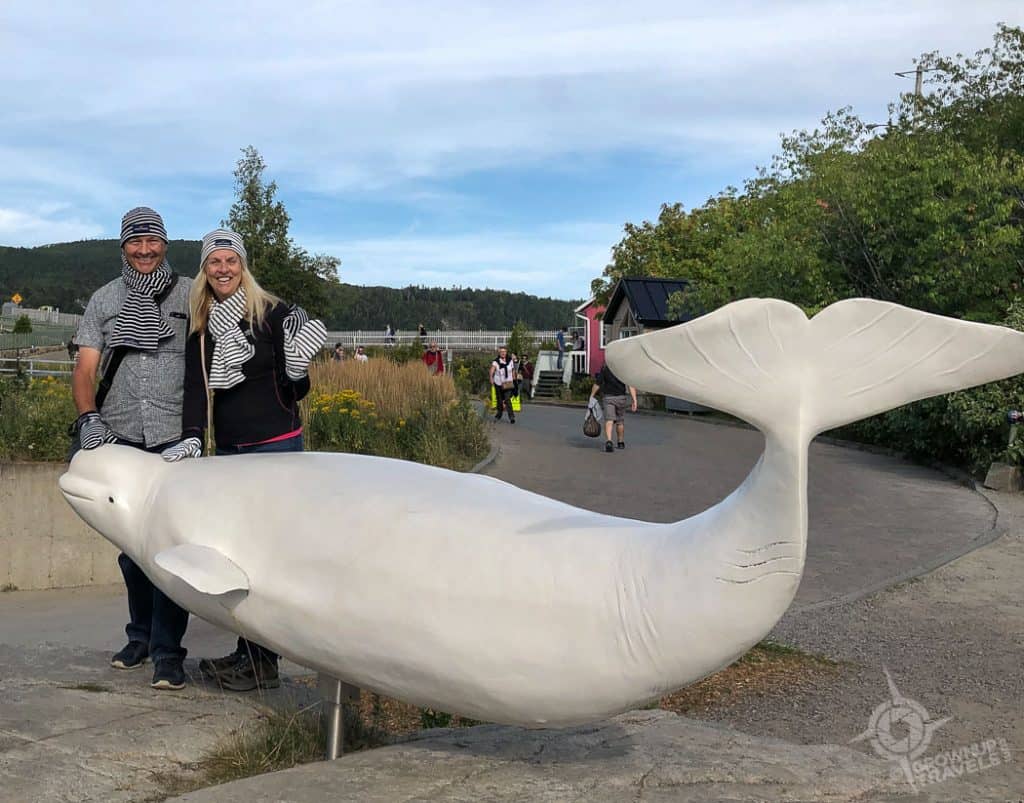

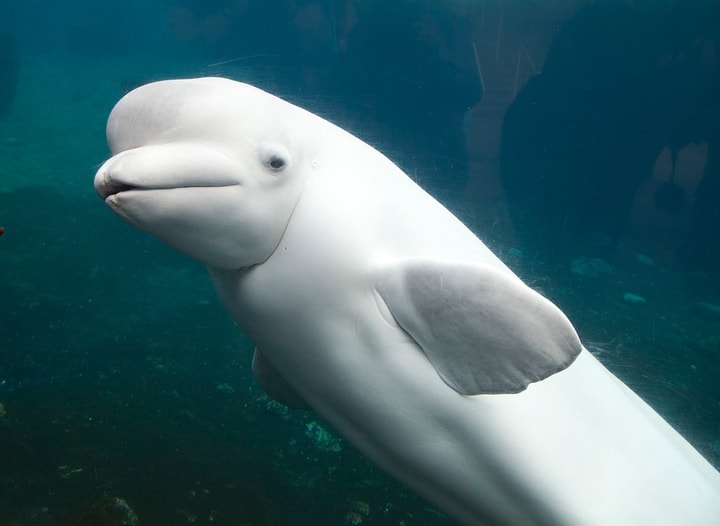
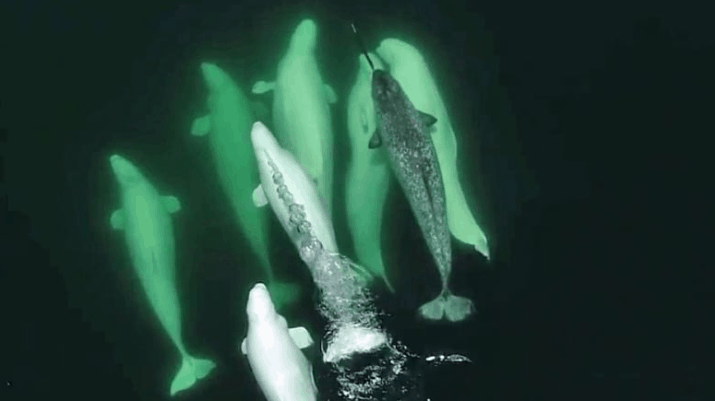

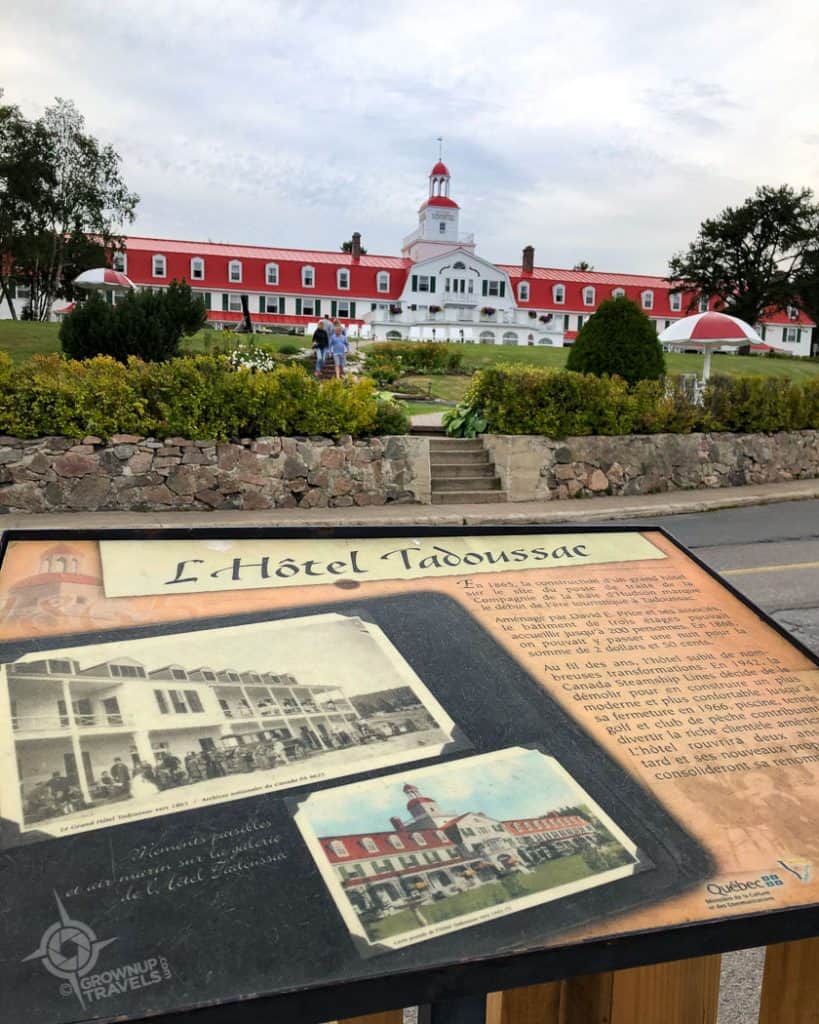

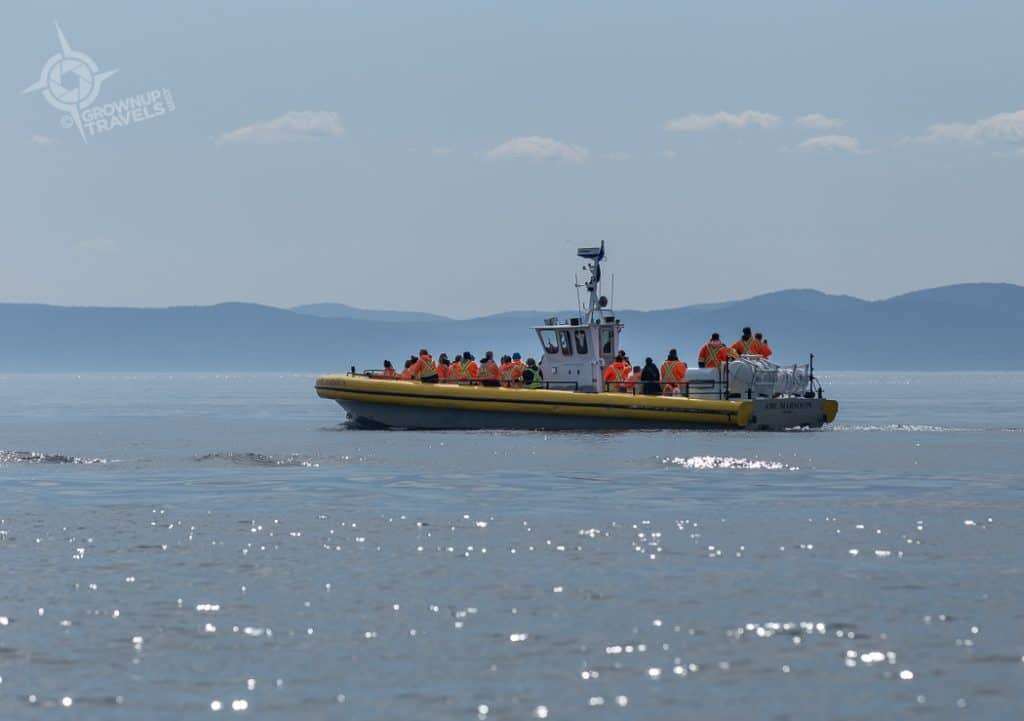
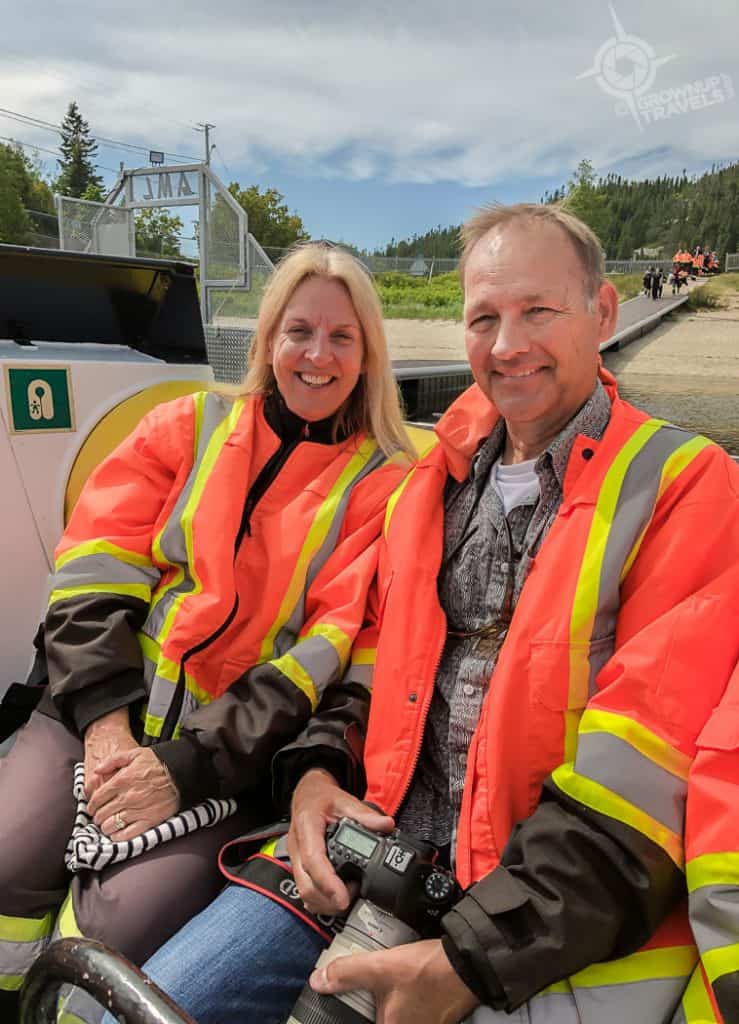
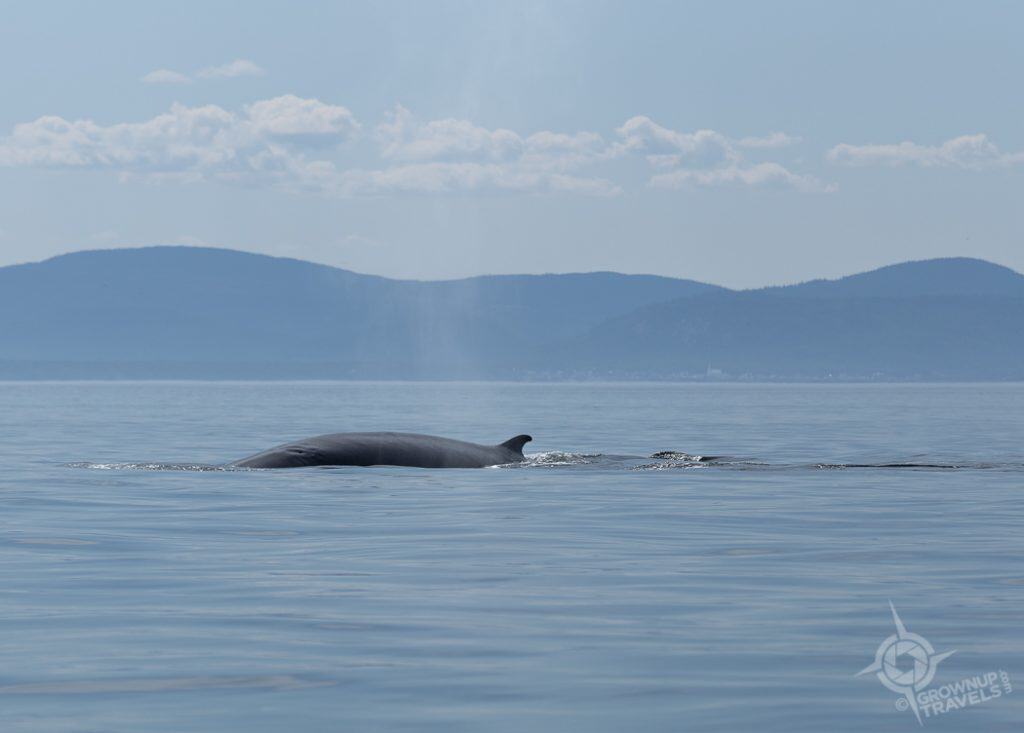
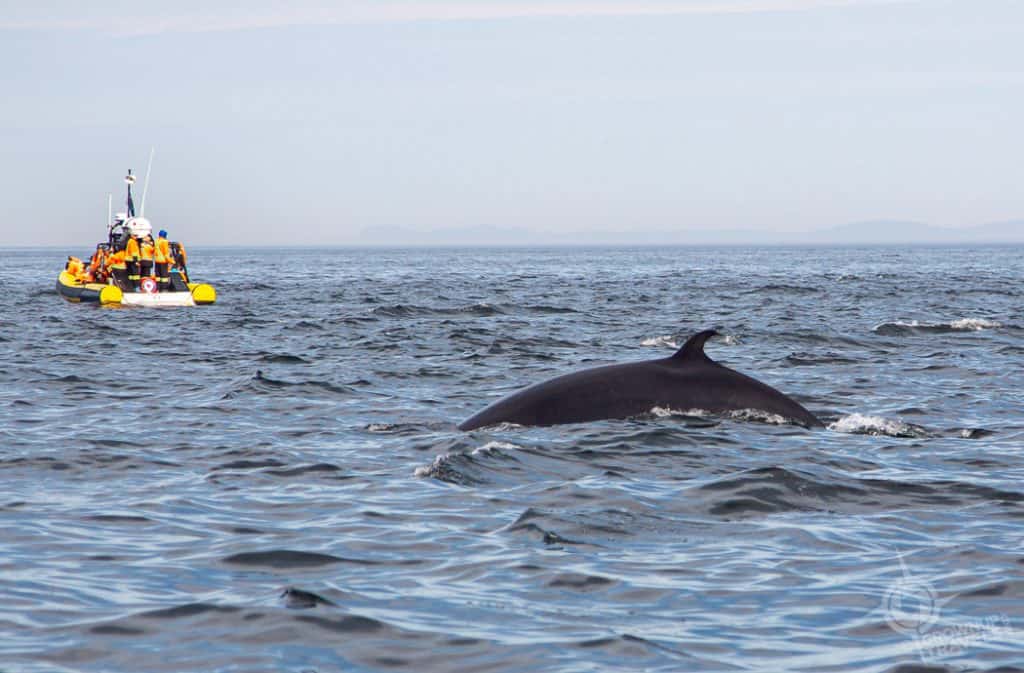
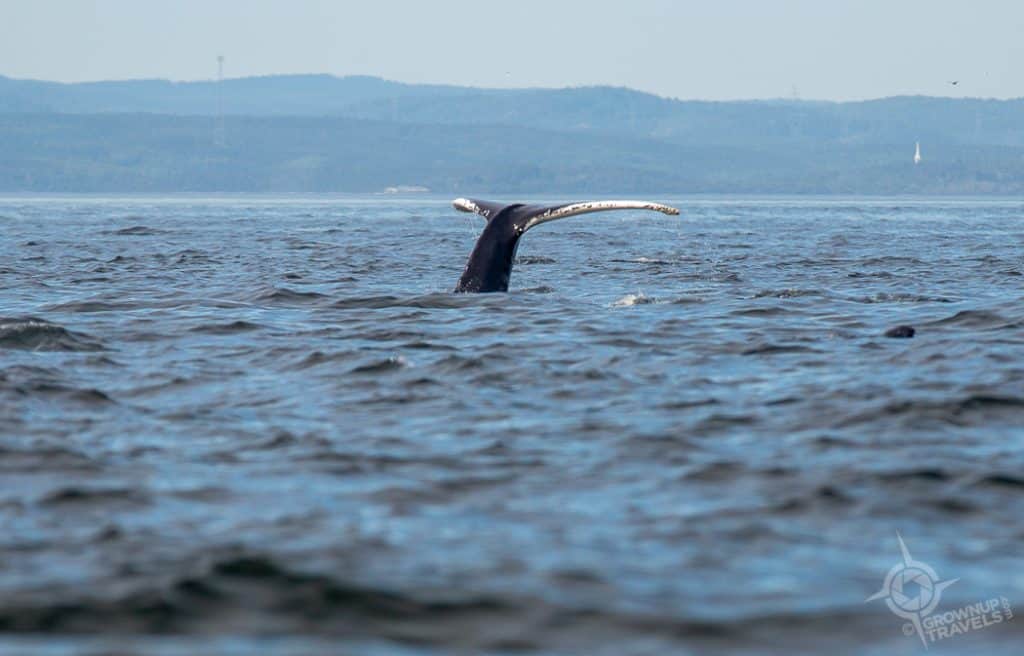
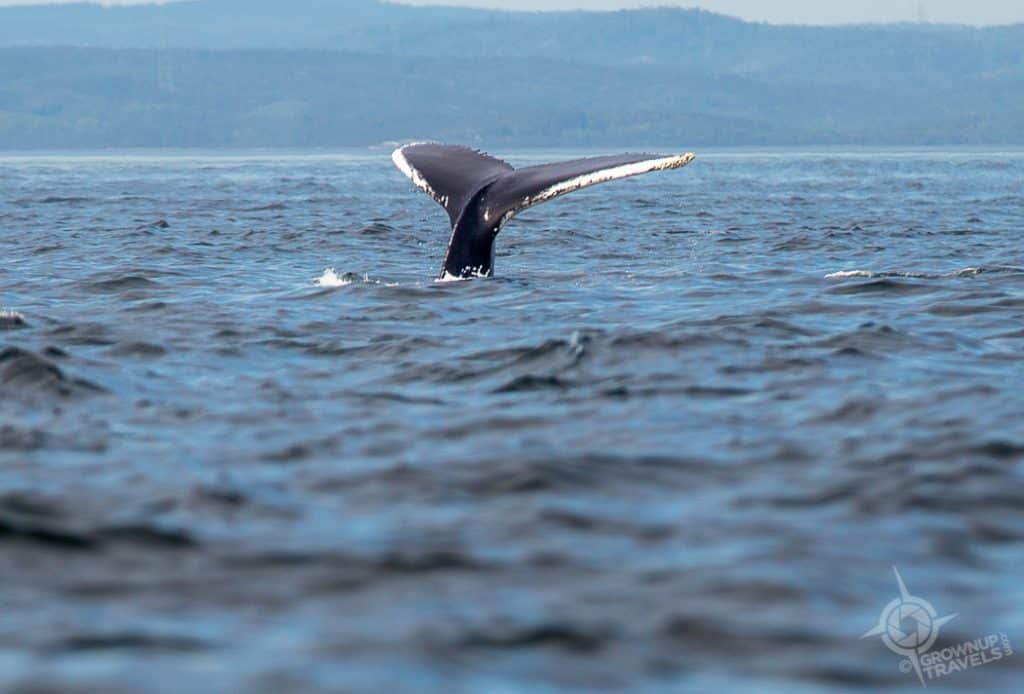

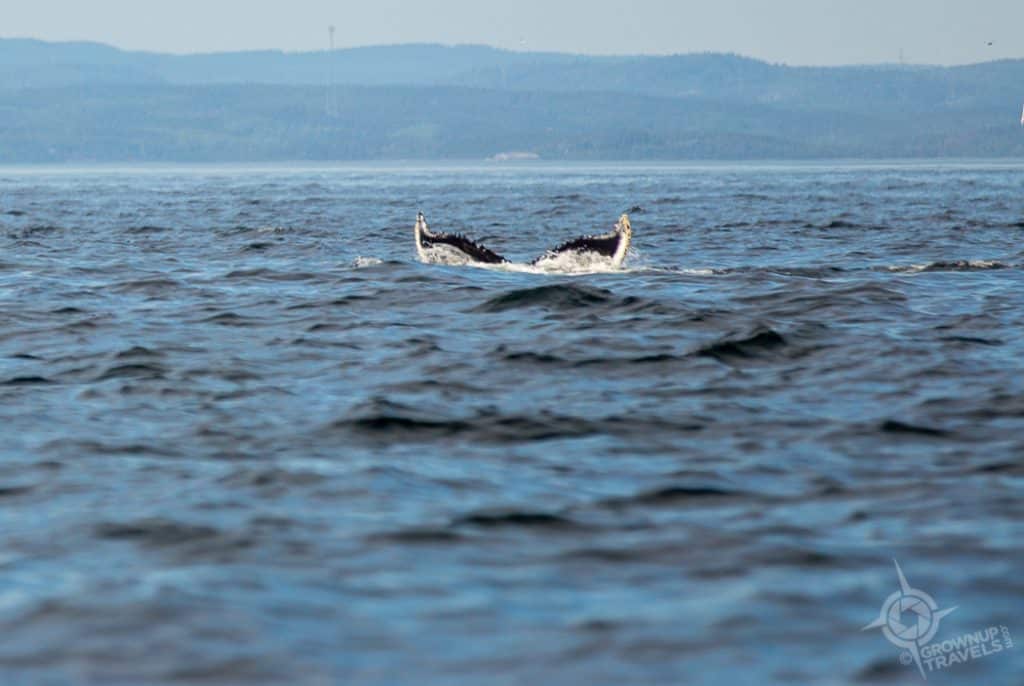
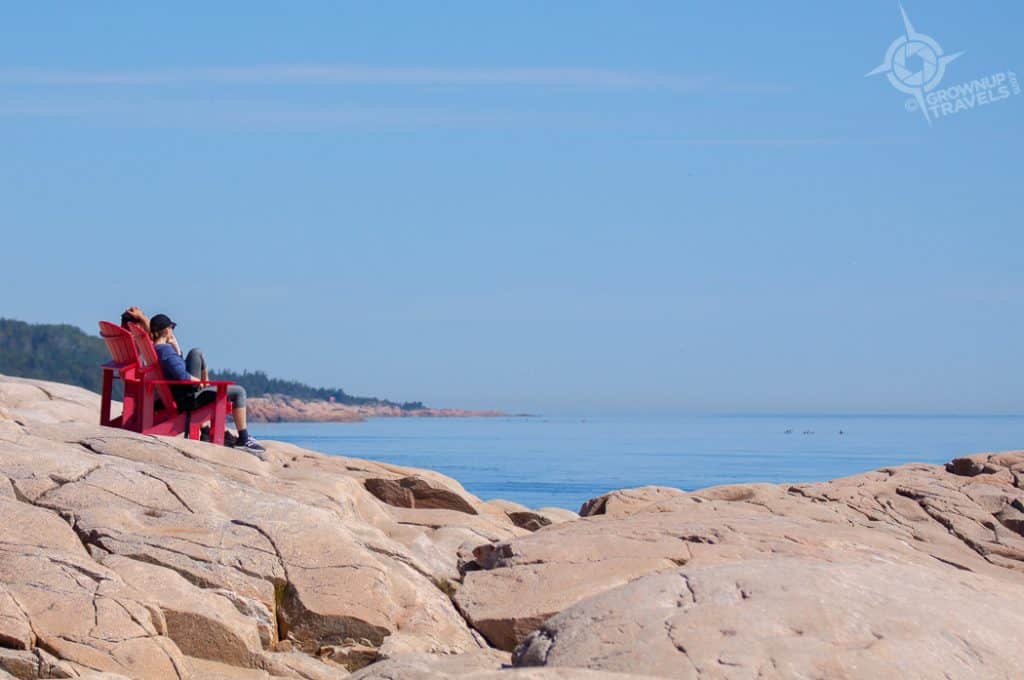

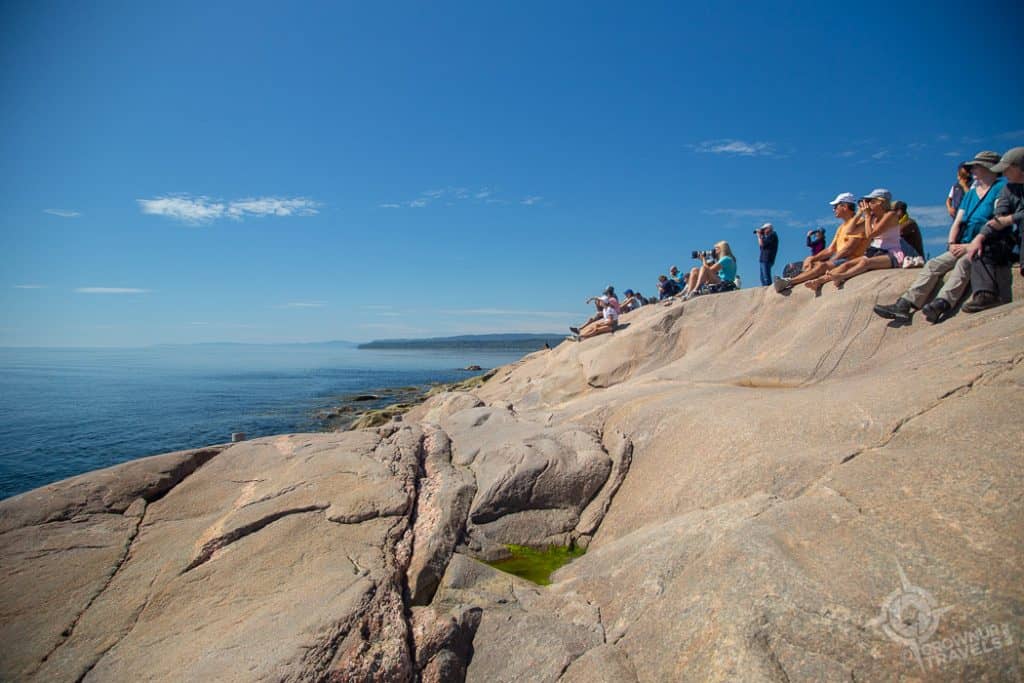

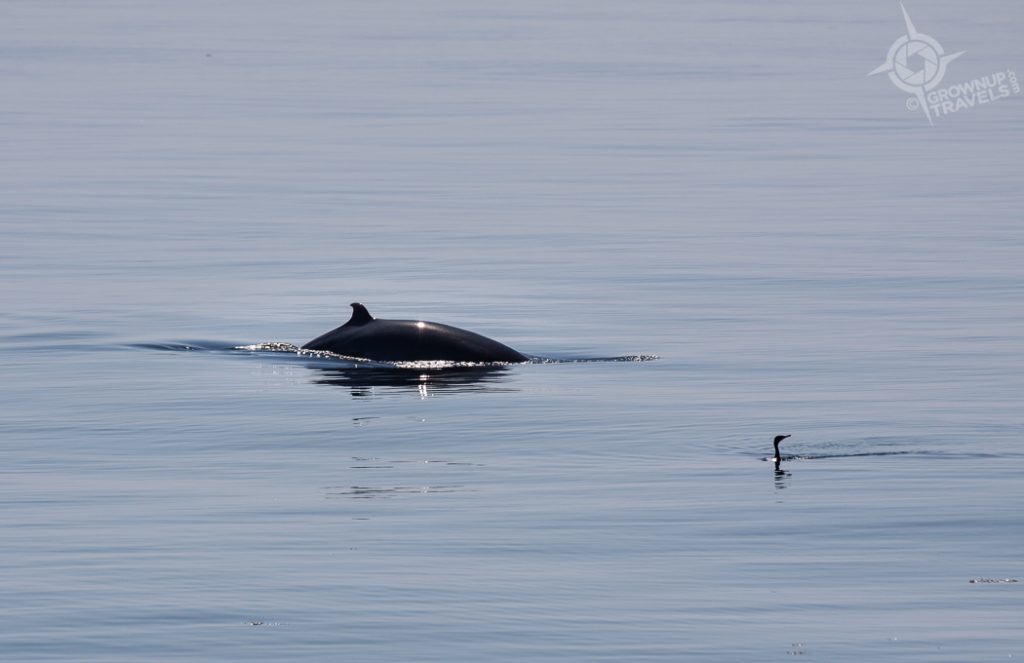


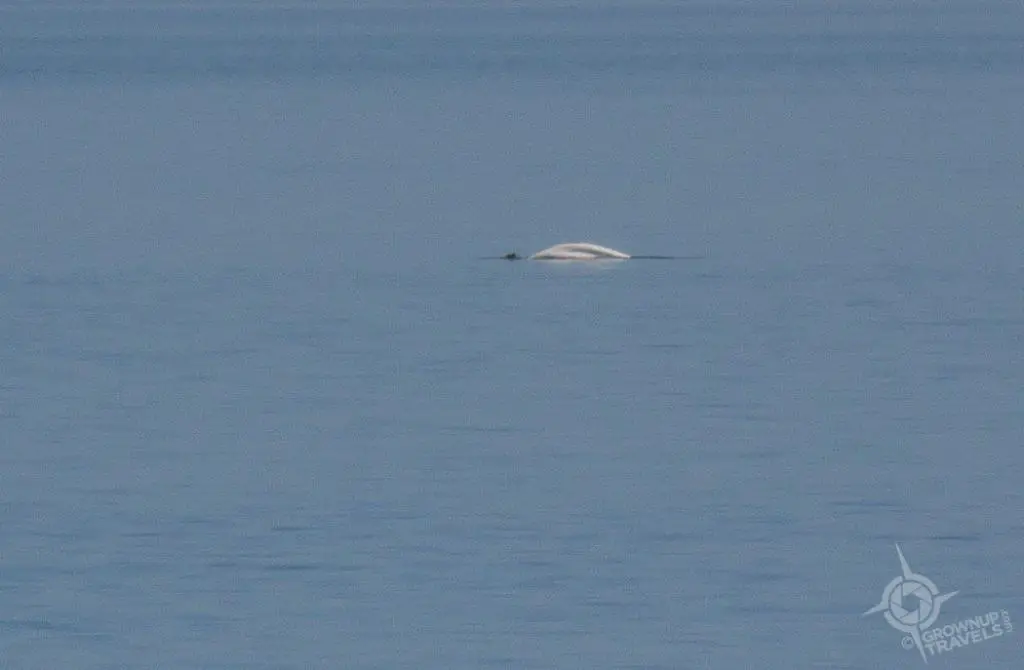



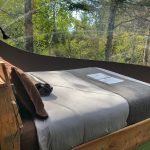


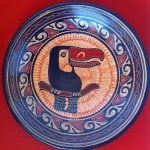






Seems like whenever we go whale watching we only ever see Minke whales but we keep trying. We always wonder why whales continue to be killed, e.g., 10000 to 900??. Great article.
We have not been whale watching in Quebec, but we recently enjoyed an AML river cruise. It was our first visit to Quebec, and made us long for more explorations. Looks like we will need to plan a Beluga search, as well.
There’s so much to see and do in Quebec – and the best part is that there are a lot of cute little towns along the Whale Route to explore after you come back to shore from whale watching.
It never would have occurred to me to go to Quebec to see whales! The only place I’ve seen one was on a dolphin-watching boat trip off of Martinique. It sounds like you get much more from a whale-watching trip to the St. Lawrence!
I’m Canadian and I didn’t even realize the St. Lawrence was that good for whale-watching either. Very glad I found out, though, as it’s much closer than Martinique! 😉
A few years ago on a whale watching jaunt to Tadoussac, we saw the Belugas and we were just as excited t o see them as you were!
I’m a little jealous, I have to say! Lucky you 🙂